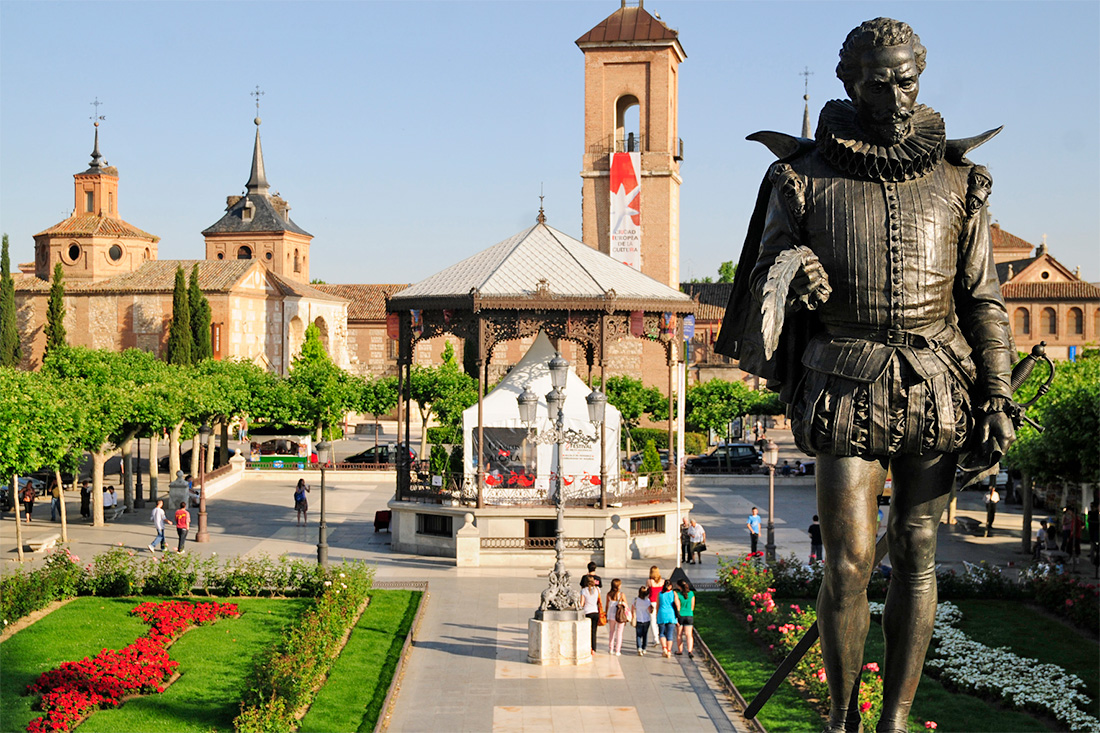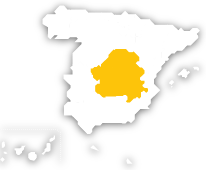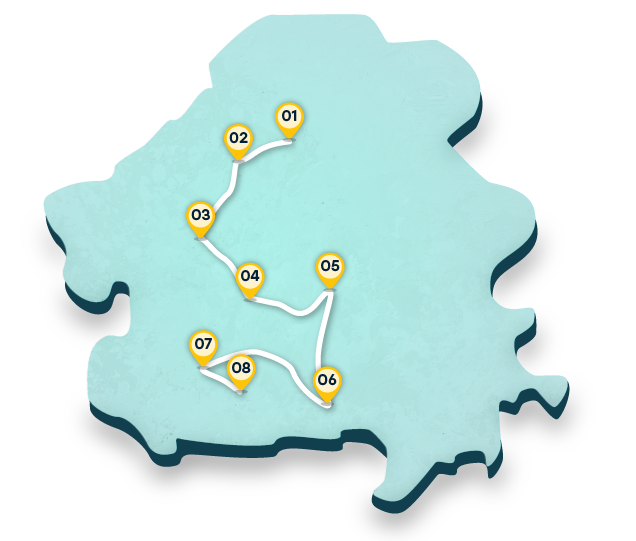Day 1: Alcalá de Henares
This route has to be begun in Alcalá de Henares. Why? Because this town in the Region of Madrid is a World Heritage City and Cervantes' birthplace. In other words, where it all began. Its university and its historic quarter have been awarded the World Heritage designation by the UNESCO.
Distance:30km Journey: By train / Duration: 41 min.
You can start your visit on Calle Mayor, leading into a charming square, Plaza de Cervantes (you’ll see the curious old theatre space, the Corral de Comedias) and from there, on to the famous University. Next comes the main attraction, the Cervantes Birthplace House-Museum, a reconstruction of the house where the writer is believed to have been born and spent his childhood. You'll feel as if you're travelling back to the 16th and 17th centuries when you see this typical old house, with its kitchen, dining room, ladies' room and even a surgeon's office (the profession of Cervantes' father). You might also be able to attend one of the workshops or see one of the shows organised by this centre. By the way, the two statues at the entrance are the story's two main characters: Don Quixote and his squire, Sancho Panza. Fancy taking a selfie with them? After this special visit you can explore other sites in Alcalá, like the Cathedral and get your strength back by going out for tapas - order a drink here and you'll also get a delicious traditional tapa (included in the price). Then you can stay the night in Alcalá or travel to Madrid, which is 30 kilometres away.






















